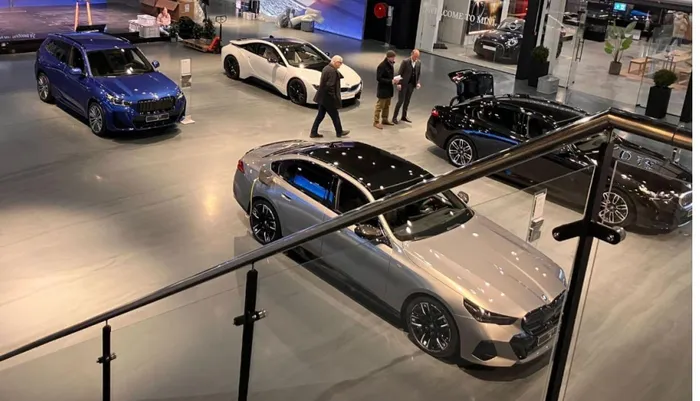
Balloon payments often enable customers to upgrade to a more premium product.
Image: Supplied
It’s a temptation like no other. The salesperson presents you with a finance deal that seems too good to be true. It means you could actually drive away with the car you want, rather than that meagre baseline hatchback that falls within your budget.
Yet when something seems too good to be true, it usually is, and many vehicle buyers have been burned by the so-called ‘balloon payment’ deal that is extremely common today.
A Volkswagen Polo driver in the Eastern Cape recently found this out the hard way after having his car repossessed at the end of the normal finance period. He claimed he had no idea that there was an outstanding amount.
According to a recent report, up to a third of vehicle loan customers are currently choosing the maximum balloon payment option. What is a balloon payment? It’s a bit like a ‘second deposit’ that needs to be paid at the end of the loan term. Deducting this amount from the finance calculation leads to lower monthly instalments, but this can bite you in the back in more ways than one.
Perhaps one of the biggest dangers is that having lower monthly instalments means it takes you longer to reach the ‘break-even’ point of your loan. Because your car depreciates sharply in the first few years of ownership, you could end up in a situation where your circumstances change and you can no longer afford to keep your car - but even if you sell it, the car could be worth less than what you owe on it.
Vehicle owners could also be forced into a costly settlement shortfall if their car is stolen or written off.
In addition to these concerns, customers should also consider the increased finance costs of such deals and be mindful of their ability to pay the balloon amount at the end of the term.
When the finance period comes to an end, consumers are faced with a number of choices. If setting the balloon with a cash payment is not feasible, they could refinance the outstanding amount or extend the loan term, but this will lead to higher interest costs.
However, as Motorlease Vehicle Finance points out, banks may be reluctant to refinance a balloon amount, particularly if the client’s credit profile or financial situation has changed since the original agreement.
“In theory, a balloon payment gives you the option to pay a large cash amount at the end of your finance term and then you can keep the car,” said Ernest North, co-founder of Naked Insurance.
“But the reality is that most people don't have that kind of cash lying around, so they end up having to sell the car. And if the car’s value is less than the outstanding balloon amount, it becomes a very serious problem - one that many people are unfortunately facing.”
North said many consumers find themselves caught in a debt trap, often years after signing on the dotted line.
“Lowering your monthly repayments can help you to stretch your salary a bit further and potentially afford a better car,” North said.
“But the lump sum at the end of the loan term is the sting in the tail. While a balloon payment can be a useful financial planning tool, all too many people find that they struggle to afford the final repayment.”
The finance costs are higher too.
For instance, if you buy a R500,000 car over a 72-month term, at 10.5% interest, and with no deposit, your monthly instalment without a balloon will be R9,481. However, a 20% balloon reduces that installment to R8,478, and a 40% balloon knocks it further down to R7,475.
It’s easy to understand why this is tempting for so many buyers, but in addition to the dangers of not even breaking even if you want to sell, this option also increases overall costs.
For instance, in the aforementioned example, the total cost of credit with no balloon is R682,000, but this increases to R710,000 with a 20% balloon and R738,000 with a 40% balloon. In the latter instance, that’s a premium of R56,000.
In certain instances where customers are confident that they will be able to afford the balloon payment at the end, such a finance agreement can allow them to purchase a newer and safer car with a warranty, rather than risking potentially higher and unpredictable maintenance costs down the line.
It could also make sense if you are paying for the car through a business, and can claim tax deductions on depreciation, interest, fuel, and maintenance.
Such a deal could also make sense if you are absolutely confident that your income will increase over the long term. For instance, if you are newly qualified in a career in which your skills are in high demand.
Some experts also point to Guaranteed Future Value (GFV) finance options as being a safer alternative to balloon payments. These add a layer of financial security by guaranteeing the future value of your car at the end of the finance term. Such deals include an “optional final payment” that will give the client the option of handing the vehicle back at the end of the term with nothing more to pay, even if its market value is lower than the GFV.
“Balloon payments can be useful in specific situations but should never be entered into lightly. Make sure you understand exactly what you’re signing and how it will affect your future finances,” said Motorlease.
Ultimately, buyers should avoid being led by their heart when making such decisions, a WesBank spokesperson said.
“They should carefully consider the repercussions of structuring their deals simply to have lower monthly payments, because they will ultimately end up paying a lot more.”
Related Topics:
